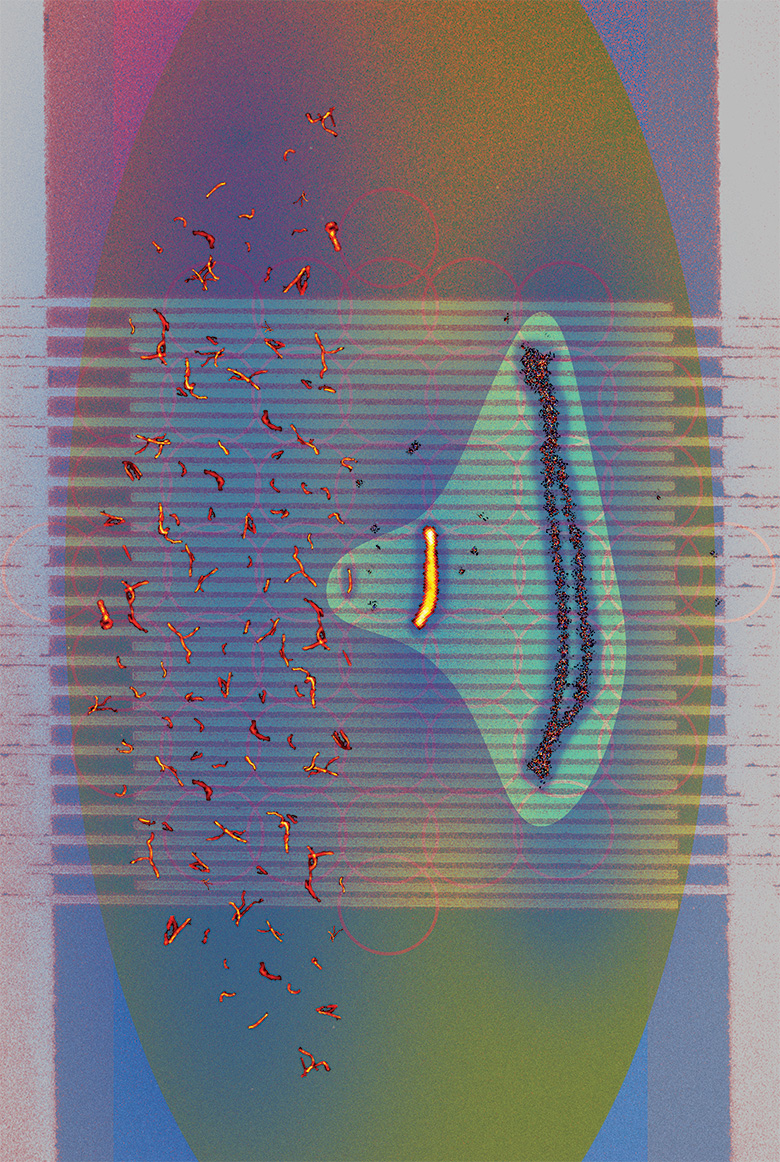
Scientist Collaborators Reza Rajabi Toustani, Sasha Kakkassery, Kingsley A Boateng, Joe (Huanyu) Qiao
Qiao Group
MINFLUX scope
Funded by National Institutions of Health
For over four centuries, biologists have been trying to understand what lies within a cell. First they tried to observe living organisms that were about 100 times smaller than the diameter of human hair. Then they wanted to break open these cells to see what their genetic material looks like, which is approximately 1000 times smaller than the cells. By observing these genetic structures, scientists can visualize how abnormalities on a nanoscale can affect the organism as a whole, whether it is a microscopic bacteria or a human.
The original images have been taken using the MINFLUX microscope housed at the Carl R. Woese Institute of Genomic Biology. The microscope is unique because instead of imaging a static structure it helps researchers track the dynamic interactions of molecules inside a cell. Inspired by the electric boogaloo, a freestyle street dance movement characterized by illusions, unusual shapes, and wiggling, the artist used patterns from other MINFLUX images to create an energetic rendering of what DNA looks like; it can be free flowing individual pieces or it can join together in a chromosome, like a circle dance.
Thoughts from the researcher:
The MINFLUX scope is unique because it allows researchers to visualize structures in unprecedented detail. The image depicts a specific isolated chromosome stained for chromosome axis proteins, SYCP3 and SYCP1, using MINFLUX. The importance of this image lies in its ability to shed light on underlying mechanisms of chromosomal abnormalities that can lead to infertility and birth defects. By using MINFLUX to measure the widths of SYCP3 in wild-type and mutant germline cells, researchers are able to confirm the presence of a bilayer structure of chromosome axes in germline cells. This knowledge can ultimately help in developing treatments in order to improve the quality of life.

